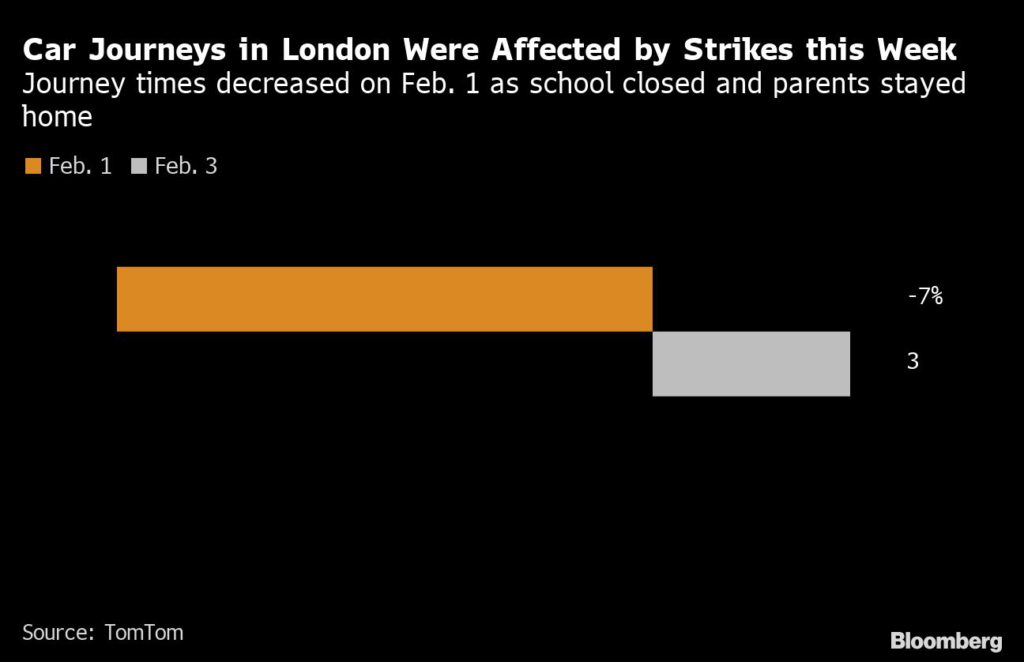Shops and restaurants in London suffered another sharp drop in demand on the latest day of strikes by UK train drivers.
(Bloomberg) — Shops and restaurants in London suffered another sharp drop in demand on the latest day of strikes by UK train drivers.
Central London footfall was 14% lower than a week earlier, according to retail research company Springboard, which measured the data up until noon Friday. Across the UK’s shopping areas as a whole, it was down 4.2%.
Separate figures from OpenTable, a restaurant booking service, revealed the sharpest fall in diners since rail strikes during the Christmas period.
Over 12,000 train drivers were staging their latest protest, the second of this week following Wednesday’s mass walkouts when teachers and civil servants were also on strike. The UK is beset by widespread industrial action as workers, mainly in the public sector, rage against pay offers that fall short of the country’s double-digit rate of inflation.
London Chamber of Commerce and Industry’s Chief Executive Officer Richard Burge called the situation “shameful” and accused unions, train companies and the government of being “insistent on causing maximum disruption.”
“Train strikes not only affect commuters but the many retail, catering and hospitality businesses that rely so heavily on footfall from tourists and visitors,” Burge said.
Pubs and restaurants fear this week’s strikes will have cost them £100 million ($123 million) in sales, according to UKHospitality, with London’s establishments shouldering most of the impact.
Almost half a million teachers, train drivers and civil servants walked out on Wednesday in protest against real-terms pay cuts. It was the largest single-day strike in a wave of industrial action that has been growing since the summer.
Strikes are estimated to have cost the UK economy £1.5 billion last year, according to Bloomberg Economics.
Congestion Eased
Train strikes typically push more cars onto Britain’s roads. This trend was reversed on Wednesday, however, as congestion levels eased, according to TomTom data. This may have been due to children staying at home amid the teachers’ strike, removing the need for a school-run and requiring home care.
On Friday, the usual trend was evident again. Congestion levels rose as people got behind the wheel in the absence of most train services.
More stories like this are available on bloomberg.com
©2023 Bloomberg L.P.










